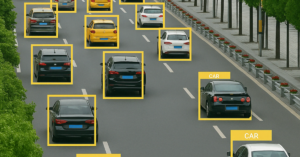Cyber Threats Grow More Advanced: Navigating the Evolving Landscape
The digital age has brought unprecedented convenience, connectivity, and opportunities for innovation. However, it has also given rise to a complex and ever-evolving landscape of cyber threats. As technology advances, so do the tactics and techniques employed by cybercriminals. This article explores the growing sophistication of cyber threats, the challenges they pose, and strategies to protect against them.
Understanding the Evolution of Cyber Threats
The Early Days of Cyber Threats
In the early days of the internet, cyber threats were relatively simplistic. Hackers primarily focused on exploiting vulnerabilities in software to gain unauthorized access to systems. These attacks were often carried out by individual hackers or small groups motivated by curiosity, the desire for notoriety, or financial gain through basic cybercrimes such as credit card fraud.
The Rise of Organized Cybercrime
As the internet became more integral to daily life and business operations, cyber threats evolved. Organized cybercrime groups emerged, driven by the potential for significant financial rewards. These groups operated like traditional criminal organizations, with hierarchical structures, specialized roles, and sophisticated attack strategies. They targeted individuals, businesses, and even governments, employing techniques such as phishing, ransomware, and distributed denial-of-service (DDoS) attacks.
State-Sponsored Cyber Espionage
In recent years, the threat landscape has further evolved with the rise of state-sponsored cyber espionage. Nation-states have recognized the strategic advantages of cyber operations, leading to the development of advanced persistent threats (APTs). These threats are characterized by their stealth, persistence, and ability to carry out long-term, targeted attacks. State-sponsored actors often focus on stealing sensitive information, disrupting critical infrastructure, and influencing political processes.
The Growing Sophistication of Cyber Threats
Advanced Persistent Threats (APTs)
APTs represent one of the most sophisticated forms of cyber threats. These attacks are meticulously planned and executed over extended periods, often going undetected for months or even years. APT actors use a combination of techniques, including social engineering, zero-day exploits, and custom malware, to infiltrate their targets. Once inside, they establish a foothold, move laterally across networks, and exfiltrate valuable data.
Ransomware 2.0
Ransomware has evolved from basic encryption malware to highly sophisticated, multi-faceted threats. Modern ransomware attacks, often referred to as Ransomware 2.0, employ double extortion tactics. In addition to encrypting data, attackers exfiltrate sensitive information and threaten to release it publicly if the ransom is not paid. This approach increases pressure on victims to comply with demands, as the consequences of a data breach can be devastating.
Supply Chain Attacks
Supply chain attacks have become a significant concern for organizations of all sizes. These attacks target the interconnected network of suppliers, vendors, and service providers that businesses rely on. By compromising a single link in the supply chain, attackers can gain access to multiple organizations. Notable examples include the SolarWinds attack, where malicious code was injected into a widely used IT management software, affecting numerous high-profile targets.
AI-Powered Attacks
The integration of artificial intelligence (AI) into cyber threat tactics has raised the stakes even higher. AI-powered attacks leverage machine learning algorithms to adapt and improve over time. These attacks can automate tasks such as vulnerability scanning, password cracking, and social engineering, making them faster and more efficient. Additionally, AI can be used to evade detection by identifying and exploiting security weaknesses in real-time.

Challenges Posed by Advanced Cyber Threats
Increasing Attack Surface
The rapid adoption of digital technologies, including cloud computing, Internet of Things (IoT) devices, and remote work solutions, has expanded the attack surface for cybercriminals. Each connected device and digital service represents a potential entry point for attackers. Managing and securing this complex web of interconnected systems presents a significant challenge for organizations.
Evolving Tactics and Techniques
Cybercriminals are continually evolving their tactics and techniques to bypass security measures. They adapt quickly to new defenses and exploit emerging technologies. This constant evolution makes it difficult for traditional security measures to keep up. Organizations must stay vigilant and proactive in their approach to cybersecurity, continuously updating their defenses to address new threats.
Human Factor
Despite advancements in technology, the human factor remains a critical vulnerability. Social engineering attacks, such as phishing and spear-phishing, exploit human psychology to trick individuals into divulging sensitive information or executing malicious actions. Even the most robust technical defenses can be undermined by a single individual’s mistake or lack of awareness. Therefore, ongoing cybersecurity training and awareness programs are essential.
Resource Constraints
Many organizations, especially small and medium-sized enterprises (SMEs), face resource constraints that limit their ability to invest in comprehensive cybersecurity measures. Limited budgets, staffing shortages, and a lack of expertise can leave these organizations vulnerable to advanced cyber threats. Cybercriminals often target SMEs precisely because they perceive them as easier targets with weaker defenses.
Strategies to Mitigate Advanced Cyber Threats
Multi-Layered Defense
Implementing a multi-layered defense strategy is crucial in mitigating advanced cyber threats. This approach involves deploying multiple security measures at different levels, including network security, endpoint protection, and data encryption. By creating multiple barriers, organizations can reduce the likelihood of successful attacks and limit the impact of any breaches that do occur.
Threat Intelligence
Utilizing threat intelligence is a proactive way to stay ahead of emerging threats. Threat intelligence involves collecting, analyzing, and disseminating information about potential and actual cyber threats. This information can come from various sources, including cybersecurity firms, government agencies, and industry groups. By leveraging threat intelligence, organizations can better understand the threat landscape and take preemptive actions to protect their assets.
Incident Response Planning
Having a robust incident response plan is essential for minimizing the damage caused by cyber attacks. An effective incident response plan outlines the steps to be taken in the event of a security breach, including identifying and containing the threat, mitigating its impact, and restoring normal operations. Regularly testing and updating the incident response plan ensures that it remains effective and relevant.
Employee Training and Awareness
Human error is a significant factor in many cyber attacks, making employee training and awareness critical components of a cybersecurity strategy. Organizations should conduct regular training sessions to educate employees about the latest cyber threats and best practices for staying safe online. This training should cover topics such as recognizing phishing emails, using strong passwords, and safeguarding sensitive information.
Zero Trust Architecture
Adopting a Zero Trust architecture can enhance an organization’s security posture. Zero Trust is a security model that assumes all users, devices, and network traffic are untrusted by default, regardless of their location. This approach involves verifying the identity of users and devices before granting access to resources and continuously monitoring for suspicious activity. By implementing Zero Trust principles, organizations can reduce the risk of unauthorized access and lateral movement within their networks.
Regular Security Assessments
Conducting regular security assessments is essential for identifying and addressing vulnerabilities. These assessments can include penetration testing, vulnerability scanning, and security audits. By proactively identifying and remediating weaknesses, organizations can strengthen their defenses and reduce the likelihood of successful attacks. Additionally, regular assessments help ensure compliance with industry regulations and standards.
Collaboration and Information Sharing
Collaboration and information sharing among organizations, industry groups, and government agencies are vital in combating advanced cyber threats. By sharing threat intelligence, best practices, and lessons learned, organizations can collectively improve their cybersecurity posture. Public-private partnerships and industry consortiums can facilitate the exchange of information and promote a unified approach to addressing cyber threats.
Investment in Advanced Technologies
Investing in advanced cybersecurity technologies is essential for staying ahead of cybercriminals. Solutions such as next-generation firewalls, endpoint detection and response (EDR) systems, and security information and event management (SIEM) platforms can provide enhanced protection against sophisticated threats. Additionally, leveraging AI and machine learning can help detect and respond to emerging threats in real-time.
The Future of Cyber Threats
Quantum Computing
Quantum computing has the potential to revolutionize cybersecurity, both positively and negatively. On one hand, quantum computing could break existing encryption methods, rendering current security protocols obsolete. On the other hand, it could also enable the development of new, more robust encryption techniques. As quantum computing technology advances, it will be crucial for organizations to stay informed and adapt their security strategies accordingly.
Internet of Things (IoT)
The proliferation of IoT devices presents both opportunities and challenges for cybersecurity. IoT devices often have limited processing power and security features, making them attractive targets for cybercriminals. As the number of connected devices continues to grow, securing the IoT ecosystem will become increasingly important. This will require implementing strong authentication, encryption, and access control measures, as well as regularly updating device firmware.
Artificial Intelligence (AI)
AI will continue to play a significant role in both cyber attack and defense. Cybercriminals will likely use AI to automate and enhance their attacks, while organizations will leverage AI to improve threat detection, response, and prevention. The ongoing arms race between attackers and defenders will drive innovation in AI-powered cybersecurity solutions. Ensuring that AI systems are transparent, explainable, and secure will be essential to their effectiveness.
5G Networks
The deployment of 5G networks will bring about faster and more reliable connectivity, enabling a wide range of new applications and services. However, it will also introduce new security challenges. The increased speed and capacity of 5G networks could amplify the impact of cyber attacks, while the complex architecture of 5G infrastructure may create new vulnerabilities. Securing 5G networks will require a comprehensive approach that addresses both technical and policy considerations.
Cyber-Physical Systems
The integration of cyber and physical systems, such as smart grids, autonomous vehicles, and industrial control systems, presents unique cybersecurity challenges. These systems are critical to the functioning of modern society and are attractive targets for cybercriminals and state-sponsored actors. Ensuring the security and resilience of cyber-physical systems will require a holistic approach that considers both digital and physical threats.
Conclusion
The landscape of cyber threats is continuously evolving, driven by advancements in technology and the increasing sophistication of cybercriminals. As cyber threats grow more advanced, organizations must adopt proactive and comprehensive cybersecurity strategies to protect their assets and mitigate risks. This includes implementing multi-layered defenses, leveraging threat intelligence, conducting regular security assessments, and fostering a culture of cybersecurity awareness. By staying informed and adaptable, organizations can navigate the complex and dynamic world of cyber threats and safeguard their digital future.

I am passionate about helping businesses grow their online presence and achieve measurable results. Let’s connect and discuss how I can help you reach your digital marketing goals!




